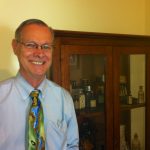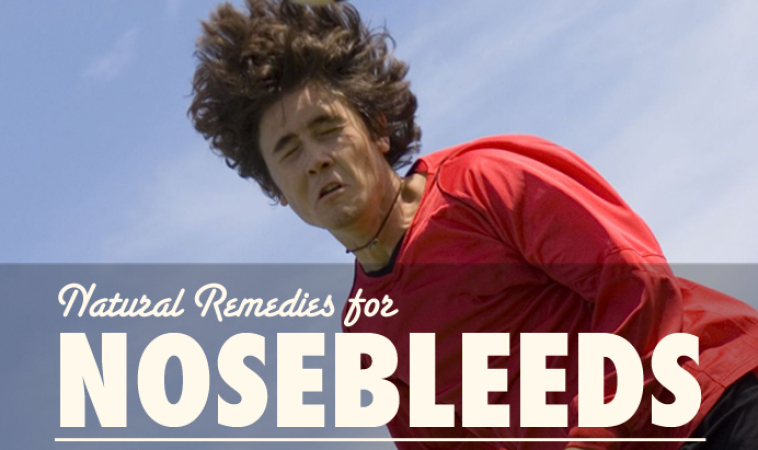Nosebleeds can occur for a variety of reasons including but not limited to localized infections in the nose, sinusitis, systemic infections, trauma, hypertension, thrombocytopenia (decreased platelets), or following excessive sneezing or trauma from excessive itching of the nose. Most bleeding occurs from vessels in the anterior-inferior septum termed Kiesselbach’s plexus. This area comprises the first ½ to 1 inch of the opening of the nose, but other areas can also be the source.
Nosebleeds are more commonly seen during dry cold and hot weather periods or from trauma due to falls or balls. Most episodes of epistaxis occurring in children or adults is self-limiting and controlled by pinching or applying pressure to this area for 5 to 10 minutes.
Nosebleeds that fail to cease with pressure or other therapies may be a sign of an underlying disease process or may be from further back in the nasal passage. Prolonged periods of bleeding, or frequent episodes should be evaluated by a physician. Unless the bleeding is severe and prolonged, anemia usually does not occur.
What to do until the doctor is seen
- Attempt to stop the bleeding with compression and/or cold compresses.
- If using some sort of packing material, withdraw it slowly after 10 to 15 minutes so as not to disrupt the blood clot formed.
- If the bleeding does not stop within a reasonable period of time, consult your physician or transport to the nearest emergency room.
Homeopathic Medicines useful for bloody noses that can be obtained at the health food store.
Ferrum metallicum – nosebleeds, in anemic patients; flushing of face, becomes fiery red with least pain, emotions or exertion, then becomes pale, bloodless and puffy; nasal discharge is bloody, greenish, slimy and acrid; frequent clotting of blood which accumulate in the nose.
Ferrum phosphoricum – nosebleeds that are bright red, especially if they are associated with the first stage of a cold or fever.
Hamamelis – profuse bleeding from the nose, flow is passive and doesn’t want to clot; long standing nosebleeds that are either active or passive; are better with lying quietly; nose feels stopped up with the bleeding; nosebleeds that are worse during menses; associated with varicosities and hemorrhoids.
Millefolium – painless hemorrhages; bright red blood; nosebleeds following mechanical injury, profuse bleeding; nosebleeds following labor and delivery or with threatened abortion or miscarriage.
Phosphorus – hemorrhages associated with chronic runny noses, from dryness in the nose or polyps that bleed; small amounts of blood periodically; bright red fluidly blood from blowing nose; internal nose is swollen and dry.
Hydrotherapy
Cold compress applied to nose and back of neck to slow down and control bleeding.
Pinch front half of nose for 10-15 minutes to facilitate clotting. You can also use wet cotton or tampons. These need to be slowly withdrawn so as not to disrupt the clot that has formed.
Diet & Nutrition– suggestions under diet and nutrition are beneficial for prevention of chronic nose bleeding.
Vitamin A – 25 to 50,000 units per day.
Beta carotene – 100,000 to 150,000 IU per day.
Vitamin C – 2 to 3000 mg per day.
This article is an adapted excerpt from the Natural Medicine Pediatric Home Health Advisor.
 Thomas A. Kruzel N.D. is a naturopathic physician in private practice at the Rockwood Natural Medicine Clinic in Scottsdale, Arizona. He received a BA in Biology from the California State University at Northridge, and his Doctorate of Naturopathic Medicine degree from the National College of Naturopathic Medicine. Dr. Kruzel is also a board certified Medical Technologist. He completed 2 years of Family Practice Medicine residency at the Portland Naturopathic Clinic where he was chief resident prior to entering private practice. He also completed a fellowship in Geriatric Medicine through the Oregon Geriatric Education Center and the Portland VA Medical Center.
Thomas A. Kruzel N.D. is a naturopathic physician in private practice at the Rockwood Natural Medicine Clinic in Scottsdale, Arizona. He received a BA in Biology from the California State University at Northridge, and his Doctorate of Naturopathic Medicine degree from the National College of Naturopathic Medicine. Dr. Kruzel is also a board certified Medical Technologist. He completed 2 years of Family Practice Medicine residency at the Portland Naturopathic Clinic where he was chief resident prior to entering private practice. He also completed a fellowship in Geriatric Medicine through the Oregon Geriatric Education Center and the Portland VA Medical Center.
He has been an Associate Professor of Medicine at National College of Naturopathic Medicine where he has taught Clinical Laboratory Medicine, Geriatric Medicine and Clinical Urology. He is the author of the Homeopathic Emergency Guide A Quick Reference Handbook to Effective Homeopathic Carepublished by North Atlantic Books and Haug Publishers Germany, and has published numerous articles in The Journal of Naturopathic Medicine as well as other publications. He also is the author of theNatural Medicine Pediatric Home Health Advisor. He has been a member of the Alternative Medicine Review Editorial Review Board since 1997 and editor of the Clinical Medicine section of the Foundations Medical Textbook. He is also the past president of the American Association of Naturopathic Physicians and was selected as Physician of the Year by the AANP in 2000 and Physician of the Year by the Arizona Naturopathic Medical Association in 2003.
















